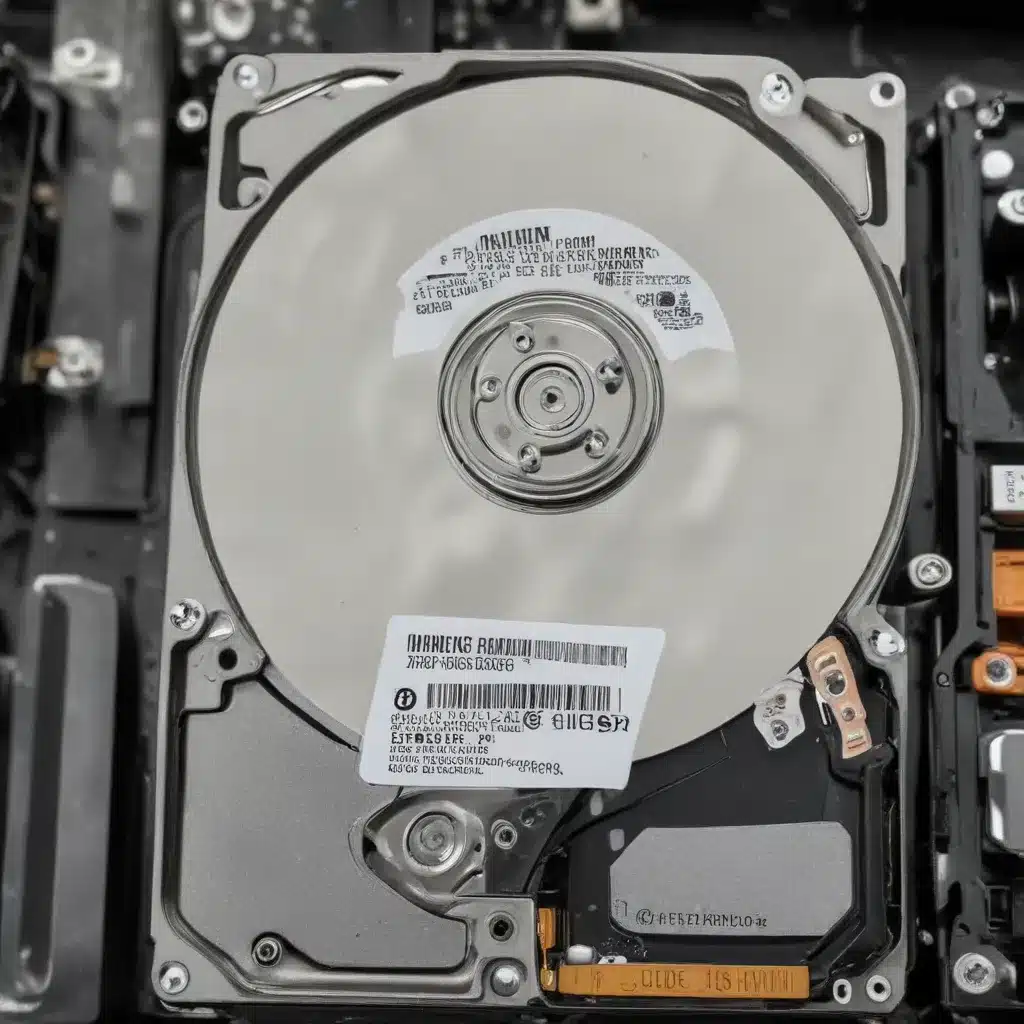
In the dynamic world of information technology, the humble hard disk drive (HDD) remains a crucial component in the smooth operation of our digital lives. Whether you’re a seasoned IT professional or a tech-savvy individual, understanding the inner workings and common failure modes of HDDs is essential for effective troubleshooting and repair.
Hard Disk Drives (HDDs)
HDD Components
At the core of an HDD lies a set of platters, coated with a magnetic material, that spin at high speeds to store and retrieve data. These platters are accessed by read/write heads that float mere nanometers above the surface, allowing for the transfer of information. The HDD’s components are encased in a protective housing, shielding the delicate internal mechanisms from external interference.
HDD Failure Modes
HDDs can succumb to a variety of failure modes, each with its own unique symptoms and underlying causes. Common issues include:
- Physical Damage: HDDs are susceptible to physical impacts, such as drops or bumps, which can lead to misaligned components, damaged platters, or stuck read/write heads.
- Logical Failures: Software-related problems, like corrupted file systems or boot sectors, can prevent the HDD from being recognized or accessed properly.
- Wear and Tear: Over time, the HDD’s mechanical components can degrade, leading to increased read/write errors, slow performance, or complete failure.
- Environmental Factors: Exposure to extreme temperatures, humidity, or electromagnetic interference can disrupt the HDD’s normal operation and cause data loss or corruption.
HDD Maintenance
Proactive maintenance is the key to extending the lifespan of your HDD. This includes:
- Temperature and Airflow Management: Ensure your HDD is operating within the recommended temperature range and has adequate airflow to dissipate heat.
- Vibration Isolation: Minimize the HDD’s exposure to external vibrations, which can cause read/write errors or even physical damage over time.
- Backup and Data Protection: Regularly back up your important data to safeguard against potential HDD failures or data loss.
HDD Diagnostics
Symptoms of HDD Issues
When an HDD begins to fail, it may exhibit various symptoms, including:
- Slow file access or system performance
- Frequent system freezes or crashes
- Unusual noises, such as clicking, grinding, or whirring
- Inability to boot the operating system
- Error messages related to “disk errors” or “bad sectors”
HDD Diagnostic Tools
To diagnose the underlying cause of these issues, a range of tools and utilities are available:
- Manufacturer Diagnostic Software: Many HDD manufacturers provide free diagnostic software, such as Western Digital’s Data Lifeguard Diagnostics or Seagate’s SeaTools, to assess the health of their drives.
- SMART (Self-Monitoring, Analysis, and Reporting Technology): This built-in feature in modern HDDs and SSDs can provide valuable information about the drive’s condition, including temperature, error rates, and remaining lifespan.
- Third-Party Utilities: Programs like CrystalDiskInfo, HD Tune, or Victoria can provide more detailed analysis of an HDD’s SMART data and other performance metrics.
Diagnostic Process
To diagnose an HDD issue, follow these steps:
- Observe and Document Symptoms: Carefully note any error messages, unusual noises, or performance problems you’re experiencing.
- Check SMART Data: Use the appropriate diagnostic software to analyze the HDD’s SMART data, looking for any red flags or pending failures.
- Run Comprehensive Tests: Perform a full surface scan or stress test to identify any bad sectors or other physical issues with the HDD.
- Isolate the Problem: If possible, try the HDD in a different system or use an external enclosure to rule out any software or system-related issues.
HDD Repair Strategies
Data Recovery
In the event of a failing or unresponsive HDD, your top priority should be to recover any critical data before attempting any further repairs. Consider using a professional data recovery service or specialized software like Recuva or DiskDigger to salvage your files.
Firmware/Software Fixes
If the diagnostic tests reveal a software or firmware-related issue, you may be able to resolve the problem through a firmware update or by running a low-level format on the HDD. However, be cautious when attempting these procedures, as they can potentially cause further damage if not executed properly.
Hardware Replacement
When all else fails, the final solution may be to replace the faulty HDD. Be sure to select a new drive with a capacity and performance level that meets your needs. If you’re unsure about the compatibility or installation process, consult with a qualified IT professional.
Preventive Maintenance
HDD Health Monitoring
Regularly monitoring the health of your HDDs is crucial to avoiding unexpected failures. Utilize the SMART data provided by your diagnostic tools to keep a close eye on key metrics, such as reallocated sectors, pending sectors, and temperature.
Storage Environment
Ensure that your HDDs are stored and operated in a well-ventilated, temperature-controlled environment. Avoid exposing them to excessive vibrations, dust, or other environmental factors that could accelerate their deterioration.
Backup Strategies
Implement a robust backup strategy to protect your valuable data. This may include a combination of local backups (e.g., external HDDs or network-attached storage) and cloud-based solutions. Regularly test the integrity of your backups to ensure you can quickly restore your data in the event of a catastrophic HDD failure.
By understanding the inner workings of HDDs, recognizing the common failure modes, and employing effective diagnostic and repair strategies, you can extend the lifespan of your storage devices and minimize the impact of any unexpected issues. Remember, a proactive approach to HDD maintenance and data protection is the best defense against the inevitable challenges that may arise in the digital world.
For more information on computer repair and IT solutions, visit our website at https://itfix.org.uk/computer-repair/.












